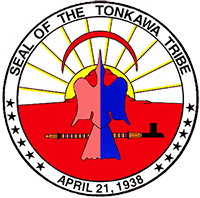In DIE BACK, Addison finds himself in an altered present, with technologies like supersonic jets, low altitude derrigible passenger transports, and street hovercraft and altered political and cultural lines. He makes a trip to what in his time continuum is Austin, Texas, but in the altered time continuum, Tonkaweya, Tejas.

Where did Tonkaweya come from? The Waco name for the Tonkawa is “Tonkaweya” which means: ‘They all stay together’. However, the tribal name is Tonkawa. I first heard the tribal name in the Boy Scouts as the name of my Order of the Arrow lodge. But the name has deep historical roots in Oklahoma and Texas. The tribe migrated south from Oklahoma, where they eventually made a treaty in 1824 with Stephen F. Austin to protect the European settlers he was bringing into Central Texas from attacks by the Comanche. Unfortunately, the tribe was decimated by rivals, leaving only one hundred alive. The tribe however, continues to thrive to this day with over seven hundred members.
In the altered time continuum of DIE BACK, the Tonkawa meet a very different fate. After the treaty with Austin, they consolidate power and share in the evolution of Tejas. The city takes the name of the people who made it successful, Tonkaweya
I’ve included the seal of the tribe above, and considered a black and white photo–the typical kind of photograph we often see of America’s indigenous peoples. But I decided I want to keep the reality of the Tonkawa Tribe separate from the fiction. Photographs from the 19th and early 20th century are well-intentioned efforts to preserve what was thought to be vanishing cultures and peoples. However, the indigenous people of the Americas have never left, but are thriving and enriching the lives of those around them.
A recent exhibition at the Seattle Museum of Art made the point well. The exhibit brought together the work of photographer Edward S. Curtis, known for his photographs of indigenous people in the western United States at the turn of the 19th century, and several contemporary Native American artists. He crafted his images, from the lens of the late 19th and early 20th century, to communicate the fragility of vanquished and vanishing indigenous tribes. Three contemporary artists’ from the lens of the 21st century captured, not a defeated and disappeared people, but the real and thriving life of Native Americans.
DIE BACK is a work of fiction. The Tonkawa however, are very real and have a real history. I invite you to learn more about the Tonkawa.
DIE BACK is available at Amazon in paperback and Kindle ebook.

